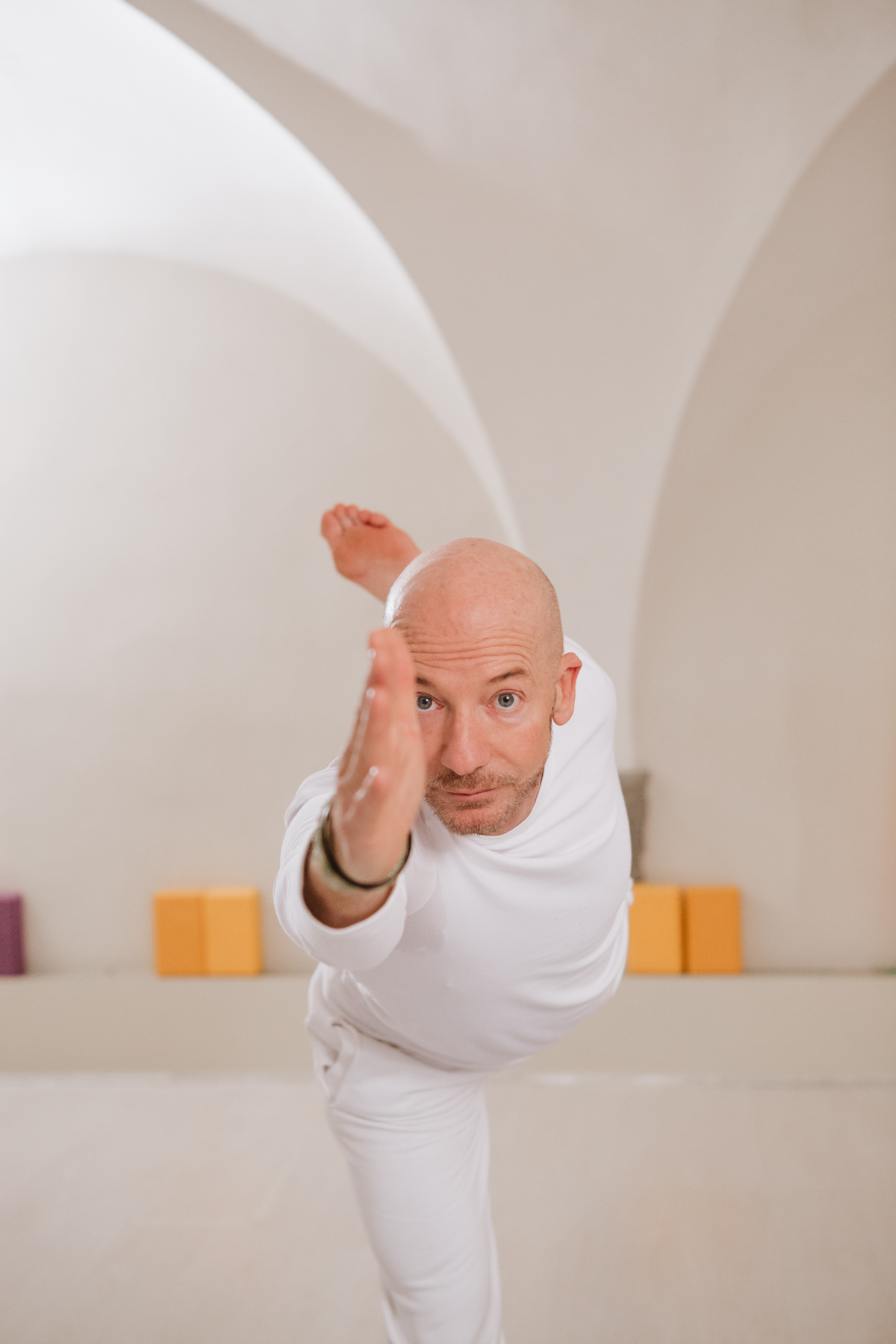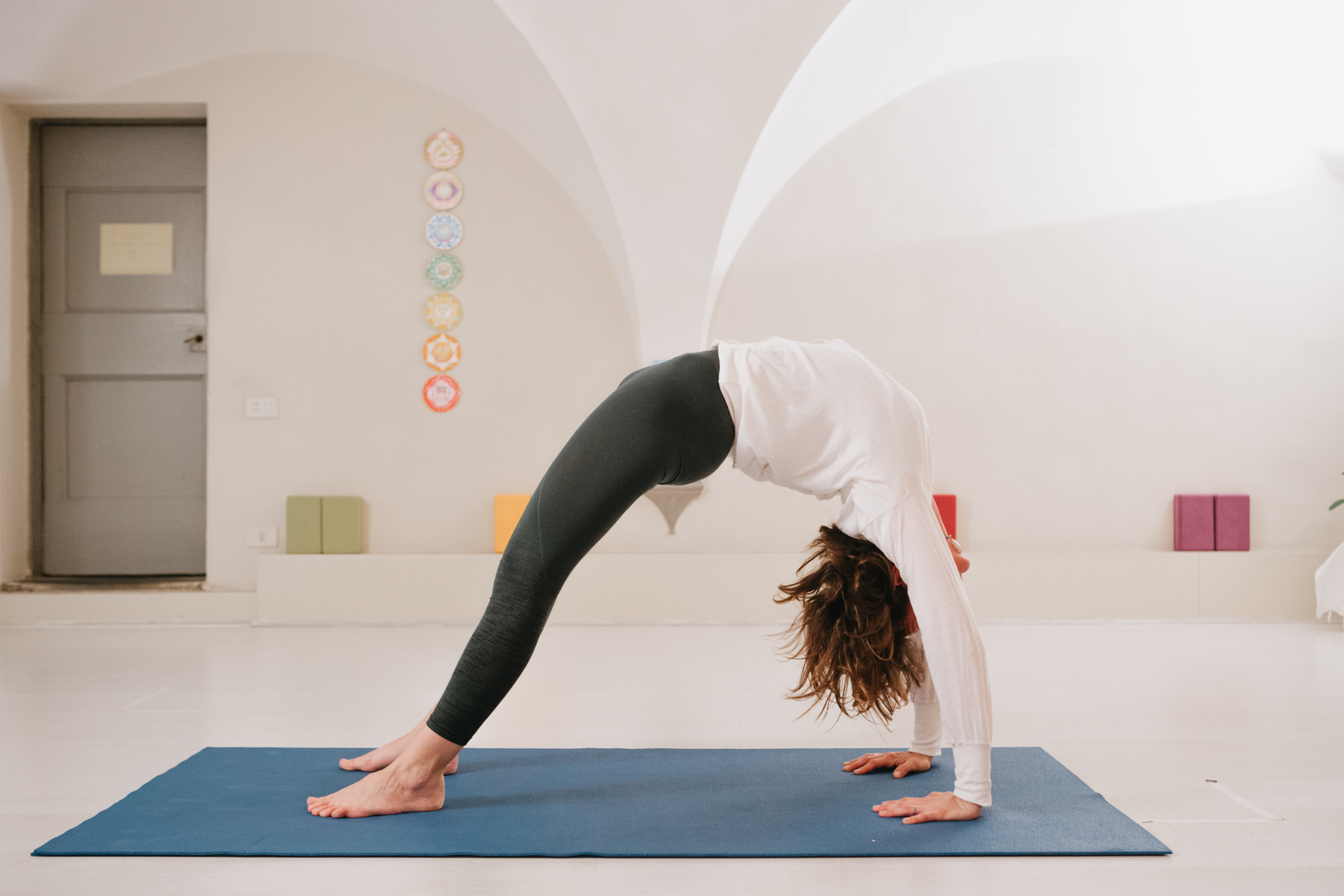Yoga
Benefits of Yoga
The regular practice of Hatha Yoga can promote considerable changes in the mental and physical health of the practitioner by:
- Inducing calmness and tranquillity
- Improving overall awareness
- Increasing energy levels
- Reducing stress
- Improving muscle strength and length
- Improving general balance
- Helping the cardiovascular system
- Improving the immune system hence helping in the prevention of diseases
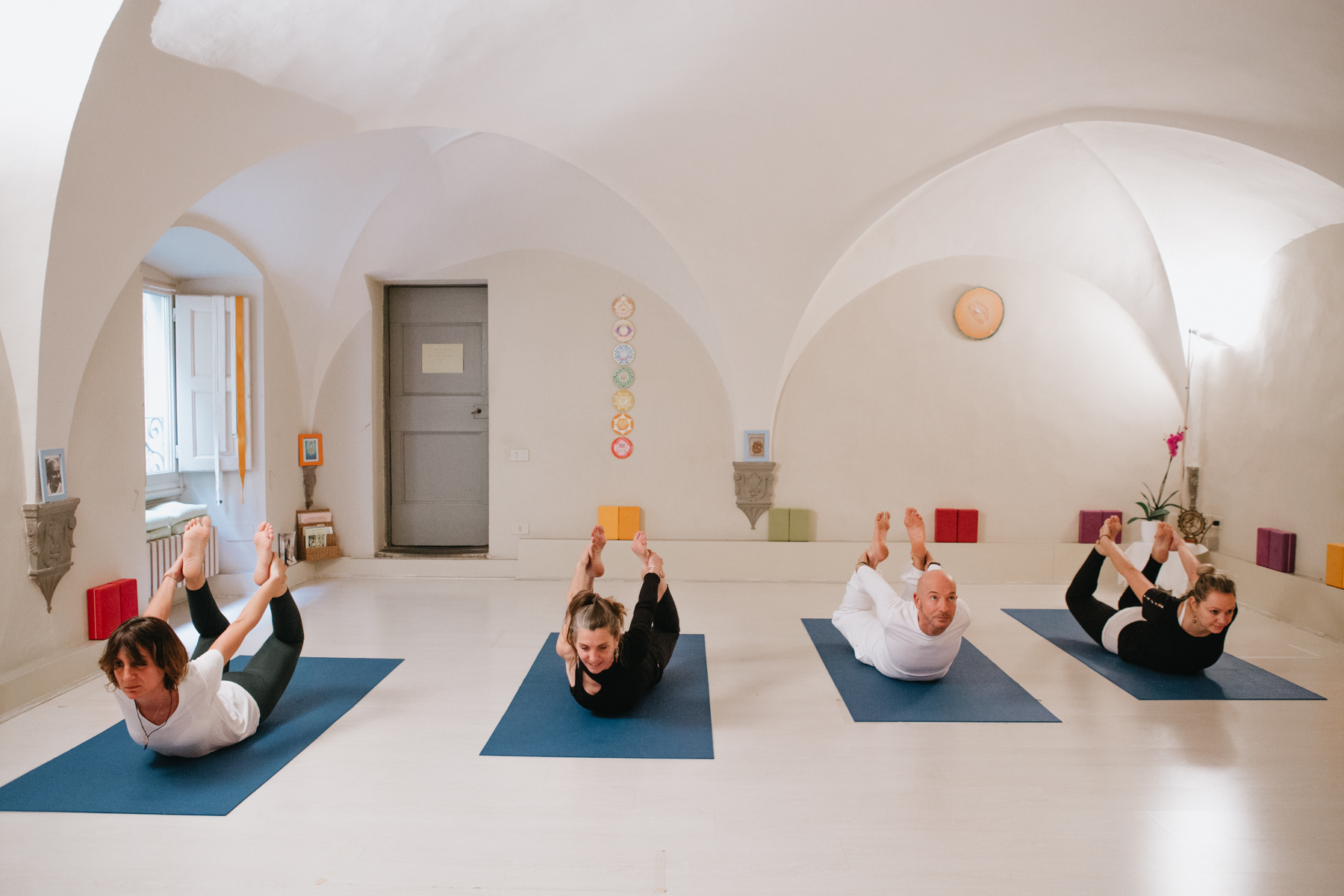
From Bliss Divine, Swami Sivananda
The basis of yoga is self-control. The discipline and practice of yoga puts emotions under control and increases the power of concentration. The discipline of yoga confers balance and tranquillity, and miraculously reconstructs a person’s life.
Yoga does not ask you to escape from life. It asks you to make your life spiritual.
Yoga is primarily a way of life, not something separate from life. Yoga does not prescribe to renounce action, but to do it efficiently in the right spirit.
Today’s life is full of stress and pressure, tension and irritability, passion and haste. If man puts into practice some of the elementary principles of yoga, he will be much better equipped to cope with such a complex existence.“
In order to effectively convey the teachings of his Master and bring with them all the wisdom of India to the West, Swami Vishnudevananda promoted a daily practice articulated in five fundamental principles: Appropriate physical exercise (ASANA), Appropriate Breathing (PRANAYAMA), Appropriate relaxation (SAVASANA), Proper nutrition (NATURAL / VEGETARIAN), Positive thinking (VEDANTA) and meditation (DHYANA).
- ASANA
Asanas, yoga poses, improve circulation and by massaging internal organs they improve their functioning. Furthermore they promote the balance between strength and flexibility of the spine, joints, muscles, tendons and ligaments. Asanas also have the function of calming and rebalancing the nervous system and help to dissolve emotional blockages, that often manifest in the physical body. - PRANAYAMA
conscious yogic breathing, which connects the body with its battery, the solar plexus, where huge reserves of energy accumulate. By drawing on this energy we are able to face life more positively, coping with stress and strengthening the immune system. - SAVASANA
deep relaxation is a fundamental practice for restoring the energetic balance of the body. Yogic relaxation is not only physical but also mental and spiritual. - APPROPRIATE DIET
consists of a diet that promotes health, that is simple, natural, easily digestible and absorbable by the body. According to the yogis “We are what we eat”. Yogic food has many positive effects on the body and mind, while having the least negative effects on the environment and other living things. - POSITIVE THINKING AND MEDITATION
are the key to peace of mind. By controlling the movements of the mind, it is possible to eliminate negative thoughts and experience profound inner peace.
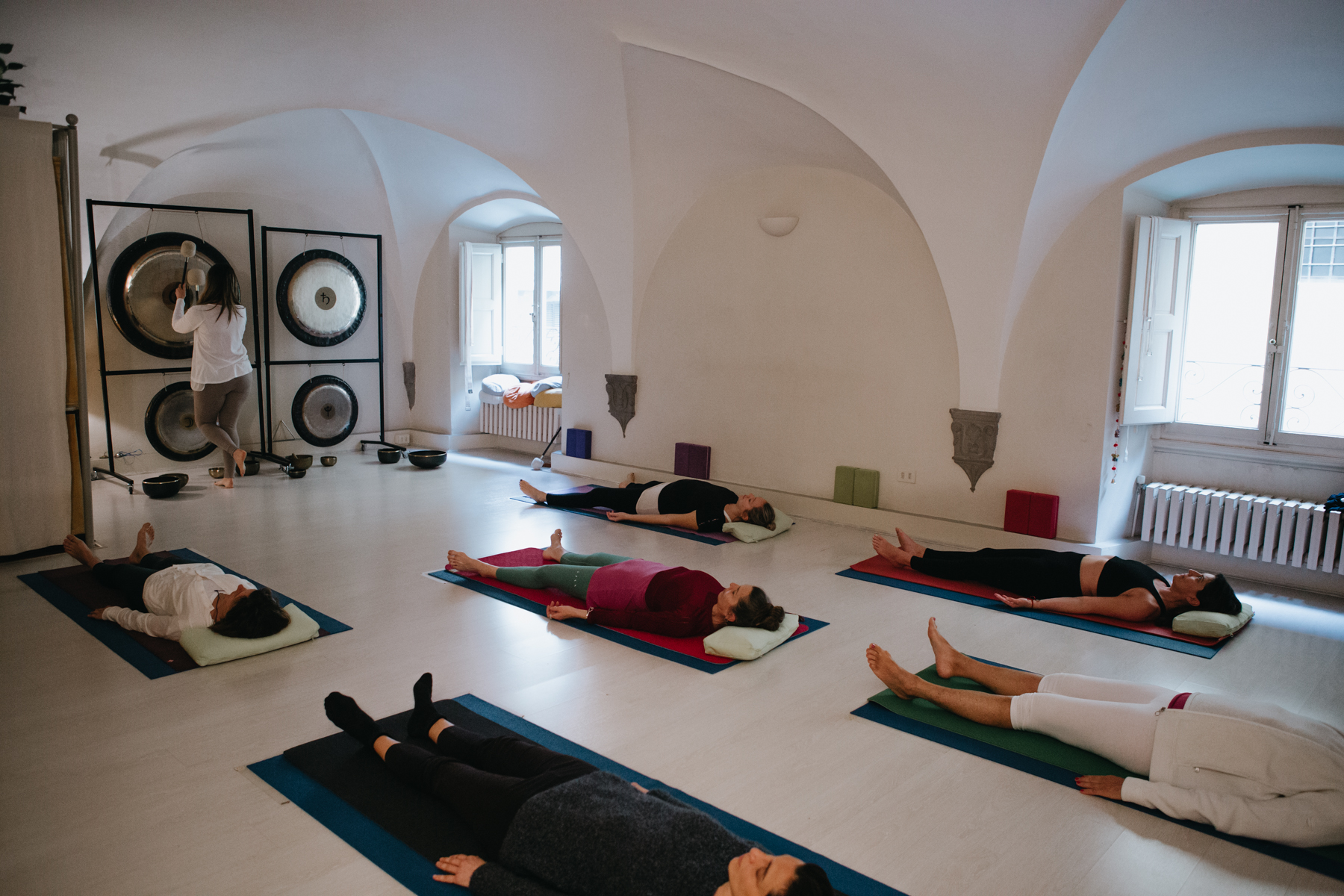
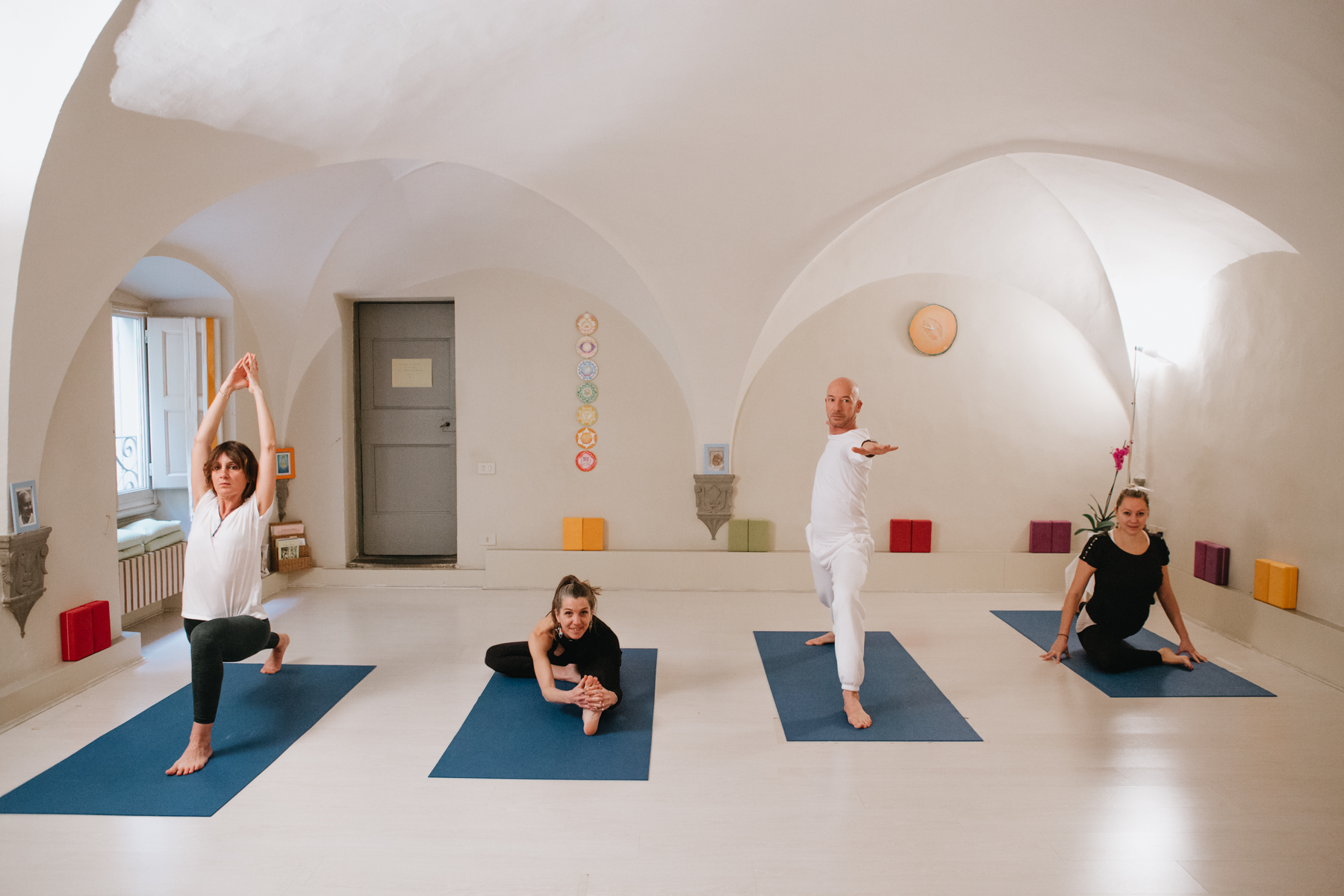
The five principles for everyday practice
In the yogic tradition there are 4 main spiritual paths to attain self-realization. The Bhagavad Gita, one of the main Hindu scriptures and an important reference for all spiritual traditions, describes three of these paths: the Yoga of Wisdom, Jnana Yoga, the Yoga of Selfless Action, Karma Yoga, and the Yoga of Love, of connecting to the Divine through yoga, Bhakti Yoga
The fourth path is the Raja Yoga, or the kingly yoga. The first well-known master of Raja Yoga was Patanjali who wrote the Yoga Sutras (Aphorisms on Yoga) approximately 2000 years ago.
This yoga is also called Ashtanga Yoga, the Yoga of the 8 limbs. The 8 limbs are steps that have to be simultaneously perfected by the practitioner in order to attain the ultimate state of unity with the universal principle of creation. These limbs are Yama (abstinences), Niyama (observances), Asana (steady and comfortable posture), Pranayama (regulation of the breath), Pratyahara (control of the sense), Dharana (concentration), Dhyana (meditation) e Samadhi (total absorption of the mind).
The main emphasis of Patanjali, was on how to find mental peace through meditation.
Hatha Yoga is another path, which draws mainly from the Tantric tradition and puts greater emphasis on pranayama (here practiced as control of the breath), asanas and mudras. The main purpose of Hatha Yoga is to balance the energies of the body in order to awake the Kundalini, the primordial source of divine energy, which lies dormant in each individual. The instructions for these practices are found, among others, in the Hatha Yoga Pradipika, one of the main scriptures on the subject, which dates back to approximately the XVI century. According to the scriptures, among the first steps in this path is the purification of the energy paths of the body, the nadis, and the balancing of the two main energies currents which are ‘Ha’ – heating, male energy and ‘Tha’ – cooling, female energy. This is achieved by following an appropriate life style and by the practice of Anuloma Viloma pranayama, also known as Nadi Shodhana which means cleansing of the nadis.
The paths of Raja Yoga and Hatha Yoga are the ones that have mostly influenced the way yoga is practiced today.
The four paths of Yoga and Hatha Yoga
Texs on Yoga
Why meditate
Who am I? What is my purpose in life? Why do some people seem to have an easier time in life than others? Where did I come from and where am I going?
These are the classic questions that almost everyone muses over at some time in life. Some struggle their entire lives to find the answers.
The purpose of the body
Hatha Yoga teaches how to keep the physical body in a fit condition so that the Jiva (individual soul) can reach safely the goal of life, self-realisation. It teaches a natural mode of living. A Yogi should have a thorough knowledge of the physical body and its functioning.
The life
Life is God in expression. Life is joy. Life is flooding of the bliss of the Spirit.
Life is a conscious stream. Life is vibrant in every atom. There is life in everything. There is no such thing as inanimate matter. Life is involved in a piece of stone. Matter is vibrant of life. This has been conclusively proved by modern scientists.
Silence
Once the disciple Bhaskali approached his Guru, Bhava, and asked him where that Eternal, the Supreme Infinite, the Brahaman of the Upanishads, was. The master spoke not. The disciple asked him again and again, but the master did not open his mouth. He kept perfect silence. At last the teacher said: ‘ I have been telling you again and again, but you do not understand me. What am I to do? That Brahaman, the Infinite, The Eternal, cannot be explained. But by deep silence, know it. There is no other place for Him to dwell in, but the one eternal deep silence! Ayam Atma Santah. This Atman is Silence’.
